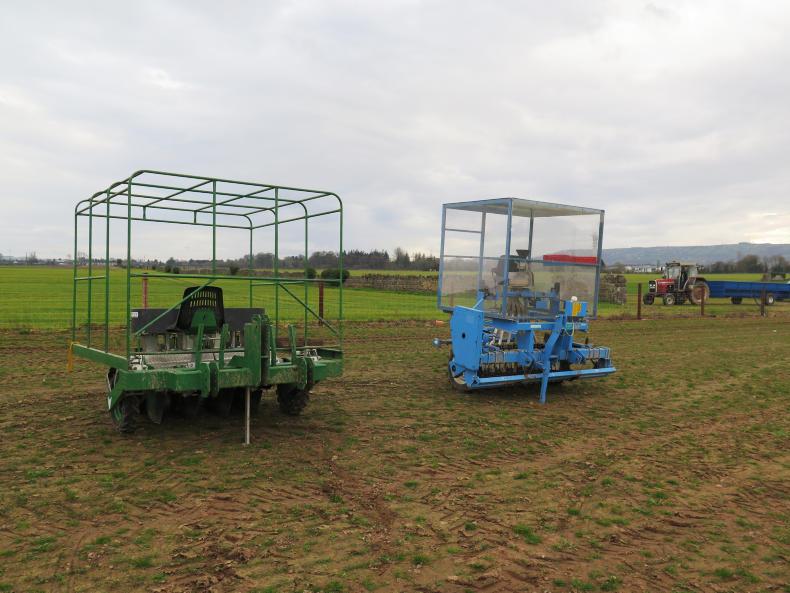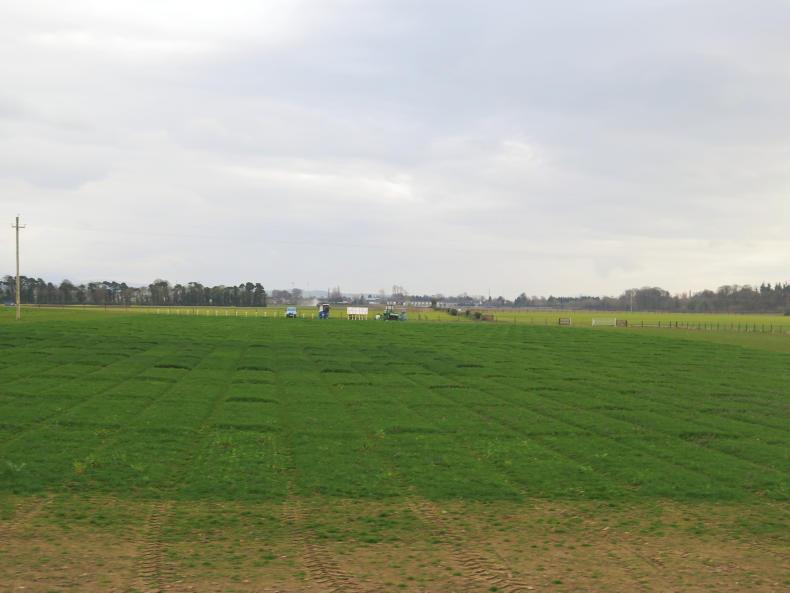The tetraploid grass variety Abergain returns to the top of the Pasture Profit Index (PPI) for 2019. The PPI allocates an economic value to grass traits. These traits are seasonal growth, quality, persistency and silage yield. The PPI value is expressed in terms of €/ha/year over the base varieties.
So Abergain, with a PPI of €214/ha, will deliver €214 more per hectare per year in increased yield, quality and greater persistency. A bit like the EBI for dairy genetics, each sub-index in the PPI is added together to give the total PPI figure.
The 2019 Pasture Profit Index is outlined below. The data for the PPI comes from the recommended lists trials run by the Department of Agriculture. On average, the 2019 PPI of each variety has fallen by about €20 compared to 2018. This is because yield and quality values fell in 2018 as a result of challenging weather.
Beneath Abergain at the top of the list are Aberclyde, Abermagic and Nifty, followed by Fintona, Aberchoice and Moira. The top 10 varieties are evenly split between tetraploids and diploids. Ploidy refers to the number of chromosomes per cell. Diploids have two, while tetraploids have four. Diploids tend to be shorter growing and dense, with higher ground cover than tetraploids. For this reason they tend to be preferred by farmers on heavier land.
Tetraploids have larger leaves, grow taller and tend to be more open than diploids. For this reason, they are not widely used on heavy soils. However, tetraploids tend to have higher growth and quality characteristics. Indeed, eight of the 10 top varieties for quality in the PPI are tetraploids, with Abergain and Astonenergy topping the list at €56 and €48 respectively. For this reason, some tetraploids should be included in grass seed mixes.
Silage yield
After the fodder shortages of 2018, more people will be looking at silage yield when it comes to picking grass varieties.
The varieties with the highest silage yield are the intermediate tetraploids Fintona and Seagoe, at €40 each.

Some of the equipment used in the variety evaluation trials at Oakpark, Co Carlow.
Abergain also scores highly for silage yield at €37. It’s as important to look at the varieties that don’t score well for silage as it is those that do.
Abergreen, Drumbo and Gusto, while strong in other areas, are the lowest scoring for silage yield and shouldn’t be used in fields that will be cut for silage.
Heading date
Heading date is an important consideration. There are no early heading varieties on the PPI.
This is because the quality of early heading varieties tends to be much lower than intermediate- or late-heading varieties.
Heading date refers to the date the variety goes to seed. Grass quality crashes when a variety goes to seed. Before going to seed the grass plant grows vigorously to become tall and capture as much sunlight as possible.
After heading out, the grass plant wants to support the seed head for as long as possible so it gets very stemmy.
Varieties with later heading dates are in the productive stage for longer and thus, grass quality and growth is better for a longer time
This is called the reproductive stage and for the next few months its focus will be to produce viable seeds.
Varieties with later heading dates are in the productive stage for longer and thus, grass quality and growth is better for a longer time.
When looking at grass seed mixtures, it’s important to look at all varieties in the mix.
You want to make sure that all the varieties in the bag are or have been on the recommended list.
To be fair, all varieties on the recommended lists and PPI are good varieties but you want to be using varieties that are good in all areas or that complement each other in a mixture.
The tetraploid grass variety Abergain returns to the top of the Pasture Profit Index (PPI) for 2019. The PPI allocates an economic value to grass traits. These traits are seasonal growth, quality, persistency and silage yield. The PPI value is expressed in terms of €/ha/year over the base varieties.
So Abergain, with a PPI of €214/ha, will deliver €214 more per hectare per year in increased yield, quality and greater persistency. A bit like the EBI for dairy genetics, each sub-index in the PPI is added together to give the total PPI figure.
The 2019 Pasture Profit Index is outlined below. The data for the PPI comes from the recommended lists trials run by the Department of Agriculture. On average, the 2019 PPI of each variety has fallen by about €20 compared to 2018. This is because yield and quality values fell in 2018 as a result of challenging weather.
Beneath Abergain at the top of the list are Aberclyde, Abermagic and Nifty, followed by Fintona, Aberchoice and Moira. The top 10 varieties are evenly split between tetraploids and diploids. Ploidy refers to the number of chromosomes per cell. Diploids have two, while tetraploids have four. Diploids tend to be shorter growing and dense, with higher ground cover than tetraploids. For this reason they tend to be preferred by farmers on heavier land.
Tetraploids have larger leaves, grow taller and tend to be more open than diploids. For this reason, they are not widely used on heavy soils. However, tetraploids tend to have higher growth and quality characteristics. Indeed, eight of the 10 top varieties for quality in the PPI are tetraploids, with Abergain and Astonenergy topping the list at €56 and €48 respectively. For this reason, some tetraploids should be included in grass seed mixes.
Silage yield
After the fodder shortages of 2018, more people will be looking at silage yield when it comes to picking grass varieties.
The varieties with the highest silage yield are the intermediate tetraploids Fintona and Seagoe, at €40 each.

Some of the equipment used in the variety evaluation trials at Oakpark, Co Carlow.
Abergain also scores highly for silage yield at €37. It’s as important to look at the varieties that don’t score well for silage as it is those that do.
Abergreen, Drumbo and Gusto, while strong in other areas, are the lowest scoring for silage yield and shouldn’t be used in fields that will be cut for silage.
Heading date
Heading date is an important consideration. There are no early heading varieties on the PPI.
This is because the quality of early heading varieties tends to be much lower than intermediate- or late-heading varieties.
Heading date refers to the date the variety goes to seed. Grass quality crashes when a variety goes to seed. Before going to seed the grass plant grows vigorously to become tall and capture as much sunlight as possible.
After heading out, the grass plant wants to support the seed head for as long as possible so it gets very stemmy.
Varieties with later heading dates are in the productive stage for longer and thus, grass quality and growth is better for a longer time
This is called the reproductive stage and for the next few months its focus will be to produce viable seeds.
Varieties with later heading dates are in the productive stage for longer and thus, grass quality and growth is better for a longer time.
When looking at grass seed mixtures, it’s important to look at all varieties in the mix.
You want to make sure that all the varieties in the bag are or have been on the recommended list.
To be fair, all varieties on the recommended lists and PPI are good varieties but you want to be using varieties that are good in all areas or that complement each other in a mixture.







 This is a subscriber-only article
This is a subscriber-only article










SHARING OPTIONS: